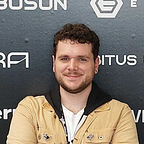Bulk Recruiting: engineering a process
Following my previous article on recruiting, I had the opportunity to apply some of my insights while recruiting an entire teams of developers all together.
Little bit of context: I was working for a ‘fintech’ software editor in Paris, and back there it was really difficult to hire experienced developer, especially for Java roles. So instead of fighting for something that wasn’t working, we tried another approach: getting young talents directly from the University.
In France, it’s quite common to end up your studies with a 6 month internship, which usually starts at the beginning of the year. So it means there’s a lot of junior developers on the market every year, looking for a first experience. So we thought it will be a good opportunity to hire a few interns, train them to our products and processes, and ideally hire them at the end as engineers to be dispatched in other teams. Also one major point to take into account: we wanted to make them work, like any other of our teams, together.
Last year, as first try we’ve decided to hire four of them… And ended up having 80+ candidates. So how to proceed with that ridiculous amount of people to see?
Group Interview
Yep. I already ear you yelling, sighing, grumbling … I did the same back then. I can’t say I was in favor of that idea, far from it ! However, as I did not wanted to give a bad experience and I was really eager to find the rights ‘talents’ for the job, it made me think on how to do things differently. If you’re going to do something wrong, at least try to do it right, sort of.
So with the people I was working on for that project, we sat together and tried to design a way to conduct the group interview in order to see four to six candidates at the time.
Disclaimer : we also warned beforehand the candidates that it will be a group interview, we wanted to avoid any bad surprise effect on that one !
Part 1. Ease up the discussion
Our goal was to make sure the candidates was as comfortable as possible (for a job interview obviously, it’s not a day at the beach sipping cocktails unfortunately). So we started by giving them name tags, a few corporate gifts (pens, paper, candies) and their choice of tea/coffee/whatever. We also wore name tags to smooth things up in the beginning. Then basically we started by presenting how we’re going to conduct the interview, to finally do a round table where everybody (i.e. interviewees and interviewers) can introduce themself.
This way we made sure that everyone knows who’s they are going to spend the next hours with. We used to present ourselves using our first name too to make it a little bit less formal, and closer to how we behave in the company.
Part 2. Individual evaluation
We still wanted to assess individual skills and motivation, so for this we made a couple of tests, covering various aspects of our daily jobs. This part was pretty straight forward, we tried to keep it time-boxed as much as possible yet wide enough to get a first idea of the candidates. So we made an effort to keep that part under 30 minutes, to keep the flow going.
Part 3. Group test
Now here comes the major part: evaluating how people act and interact together. We wanted to build some sort of simulation of what our teams do on a daily basis. And what better way to see how people behave than a brainstorming session ?
So we design an exercice based on a previous project we worked on a few years back, and reduced it in order not only to keep it short enough, but also to see if people ask questions to find the missing pieces of the puzzle.
We started the group test part by explaining the context of the project and the expected outcome, then left the candidates between themselves for 10–15 minutes to brainstorm. After that we get back to them, and start discussing what they understood and what they are thinking of. Quickly enough you can see who already has questions or who is solving the issues as they come, who is leading and who is following, etc.
Usually we took an hour for the entire exercice, and it helped us a lot to identify who would be a good match for our teams.
Part 4. Analyzing the results
Right after the interview session we spend some time going through every candidates of every aspect. We had a rating system/checklist to evaluate everybody the same way. It really helped us in order to make decisions on who we will hire after several sessions, while making sure everybody has been given the same evaluation process.
Last but not least, we gave candidates feedback as soon as possible, wether we decided to hire them or not. And for those we had decided not to hire, we made it important to give them feedback for potential improvements as well.
